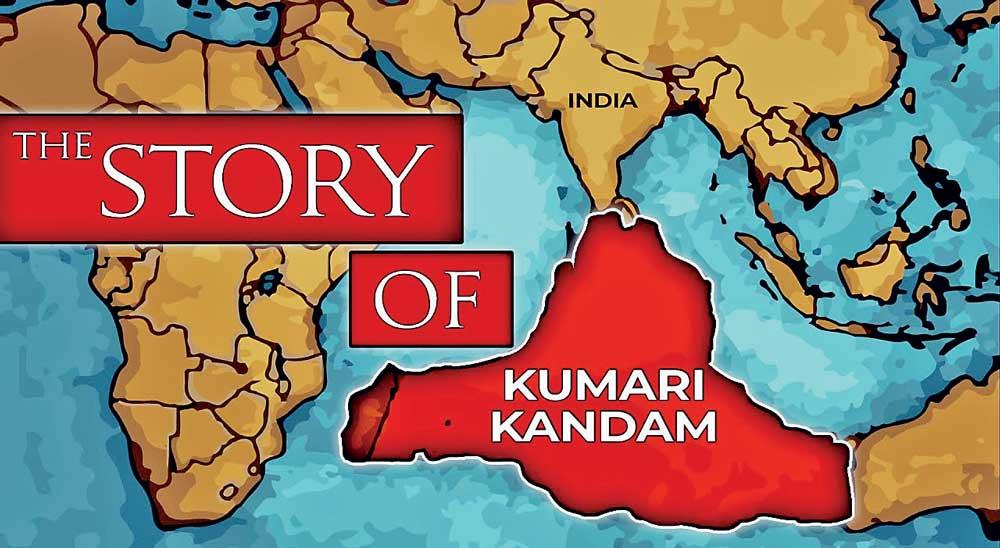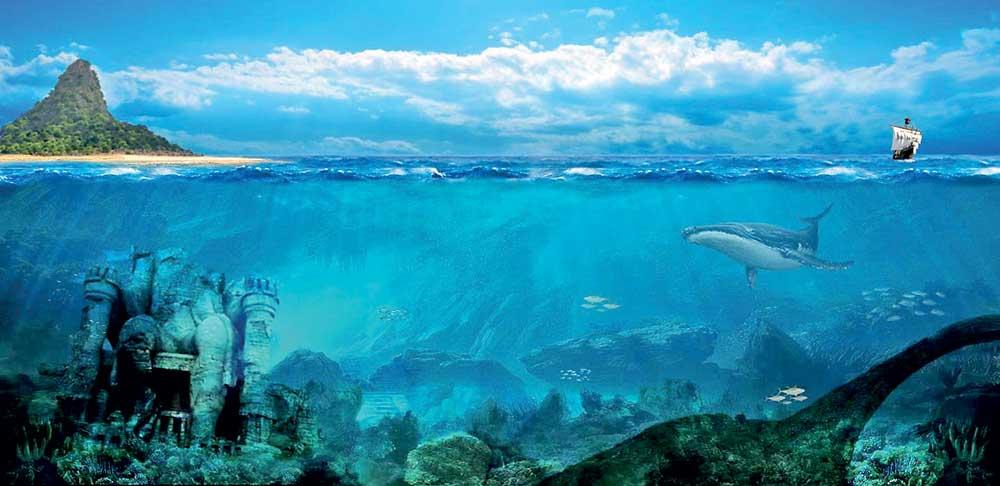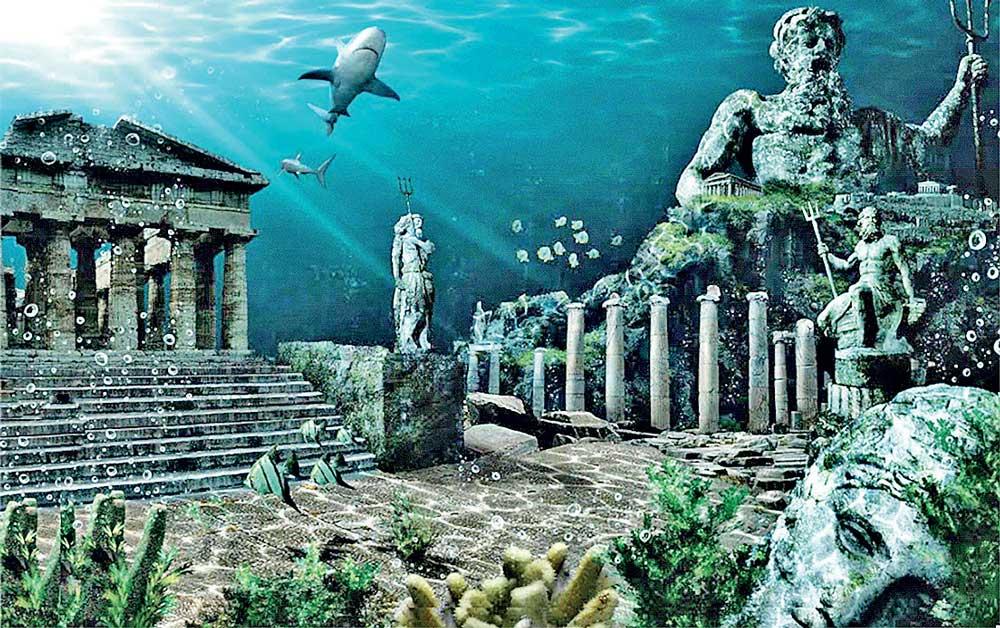
Kumari Kandam, often referred to as the lost continent of Tamil civilization, is a subject of immense fascination, blending mythology, history, and scientific speculation. It is believed to have been a vast landmass that once connected southern India with other parts of the world before it was submerged beneath the ocean. This concept has been deeply ingrained in Tamil folklore, ancient literature, and cultural identity, making it a compelling mystery that continues to intrigue scholars and enthusiasts alike.
The origins of the Kumari Kandam legend can be traced back to ancient Tamil Sangam literature, which speaks of a great land ruled by Tamil kings that was eventually swallowed by the sea. Tamil texts, particularly from the Sangam period, reference a flourishing civilization with advanced knowledge, governance, and literature. The idea that an ancient Tamil kingdom once thrived on a lost continent has been a significant part of Tamil identity, with many believing that it was the cradle of Tamil culture and language. The description of Kumari Kandam in Tamil literature portrays it as a land of great prosperity, where scholars, poets, and kings coexisted harmoniously. According to these ancient texts, the region had numerous rivers, mountains, and cities, all of which contributed to a thriving civilization before nature took its course and submerged it beneath the waves.
Some theories suggest that Kumari Kandam might have been part of a larger lost continent, often linked to the theory of Lemuria. Lemuria was a hypothetical landmass proposed by European scientists in the 19th century to explain the similarities in flora and fauna between India, Madagascar, and Australia. This theory was later dismissed by modern geology due to the development of plate tectonics, but it found a stronghold in Tamil nationalist discourse. The belief that Kumari Kandam was the original homeland of the Tamil people before a great flood forced migration to present-day Tamil Nadu and Sri Lanka gained widespread acceptance among certain historians and cultural enthusiasts. This connection to Lemuria has further fueled the idea that the lost continent was not merely a myth but a historical reality.
The fascination with lost continents, whether it be Atlantis, Lemuria, or Kumari Kandam, has always captured the human imagination, and the mystery surrounding these lost lands continues to fuel new interpretations and speculations.
Supporters of the Kumari Kandam theory often point to geological and archaeological evidence to support their claims. The Indian Ocean holds many submerged structures and land formations that suggest the possibility of ancient human habitation before rising sea levels covered them. Some underwater ruins off the coast of Tamil Nadu and Gujarat have sparked speculation that remnants of Kumari Kandam may still exist beneath the ocean. The Poompuhar site, for example, contains submerged structures that some believe date back thousands of years. Additionally, marine archaeology has discovered submerged landmasses that were once above sea level, raising the possibility that ancient civilizations may have lived in these areas before they disappeared beneath the waves. Despite these findings, mainstream archaeology remains skeptical, attributing such submergence to natural climate changes and tectonic activity rather than evidence of a lost Tamil continent.

The idea of Kumari Kandam also has significant cultural and political implications. For many Tamil nationalists, it represents a symbol of an ancient and independent Tamil identity, predating other civilizations. This belief has been used to strengthen claims that Tamil culture has an unbroken historical lineage that goes back tens of thousands of years. The notion of Kumari Kandam has also been employed in literary and artistic expressions, reinforcing a sense of pride and nostalgia for a lost homeland. Whether as a political tool or a cultural narrative, the story of Kumari Kandam continues to be a powerful element in Tamil consciousness.
Scientific perspectives on Kumari Kandam remain divided. While some researchers acknowledge the possibility that parts of South India may have been larger in prehistoric times, they attribute any lost landmass to natural geological processes rather than an advanced civilization. The concept of a submerged continent is often met with skepticism due to the lack of concrete evidence. The gradual rise in sea levels over thousands of years, combined with shifting tectonic plates, could explain why certain landmasses disappeared. However, these explanations do not completely rule out the idea that an ancient Tamil civilization might have existed in areas now submerged by the ocean.
The influence of Kumari Kandam extends beyond scholarly debates and has permeated popular culture. Numerous books, films, and discussions have been inspired by the legend, with writers and filmmakers weaving fictionalized accounts of an advanced Tamil civilization lost to history. The fascination with lost continents, whether it be Atlantis, Lemuria, or Kumari Kandam, has always captured the human imagination, and the mystery surrounding these lost lands continues to fuel new interpretations and speculations. The legacy of Kumari Kandam persists not only in literature and cinema but also in academic discussions and folklore. The fact that so many people believe in its existence, despite the absence of definitive proof, speaks volumes about the enduring power of myths and their role in shaping cultural narratives.
Kumari Kandam’s significance is not just historical but also deeply emotional for many. It represents an unbroken link to an ancient past, a source of cultural pride, and a reminder of the power of nature in shaping human destiny.
The lack of physical evidence has not stopped believers from continuing their search for clues about Kumari Kandam. Some researchers argue that future advances in marine archaeology and deep-sea exploration could provide new insights into the legend. The discovery of submerged cities or artifacts in the Indian Ocean could potentially change our understanding of history and offer validation to the Tamil texts that describe the lost land. Until then, Kumari Kandam remains a tantalizing mystery that straddles the line between myth and reality, a story that continues to be passed down through generations.

Kumari Kandam’s significance is not just historical but also deeply emotional for many. It represents an unbroken link to an ancient past, a source of cultural pride, and a reminder of the power of nature in shaping human destiny. Whether it existed as a real landmass or remains a mythological construct, its impact on Tamil culture and identity is undeniable. The legend of a lost Tamil continent continues to thrive, inspiring new generations to explore, question, and dream about a forgotten civilization beneath the ocean. Even if Kumari Kandam is never physically found, its influence in literature, culture, and historical discourse ensures that it will never truly be lost.
As long as people continue to tell its story, Kumari Kandam will remain one of the most captivating mysteries of all time, a testament to the enduring nature of legends and the timeless quest for knowledge about our past.











